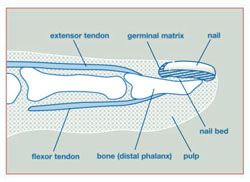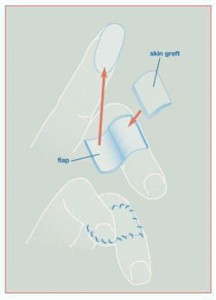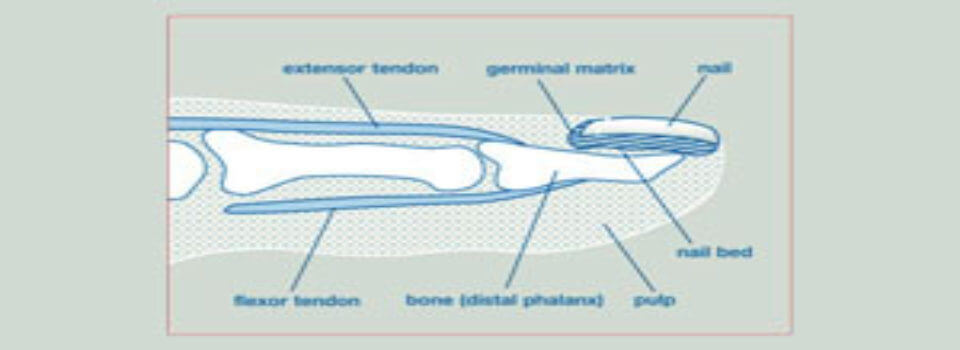 What is it?
What is it?
Injuries can happen to various parts of the fingertip, such as the nail, skin, bone, nailbed, tendon, and the pad of the fingertip. The type of skin on the undersides of our fingertips is very unique in that it has many more nerve endings than the skin on most of the rest of the body. These nerve endings, which give us such sensitive perception in our fingertips, can also become damaged.
What causes it?
Because we use our hands for so many tasks in our daily lives, fingertip injuries are quite common. Fingers may become crushed in a door, hit by a heavy object or cut by a tool.
What are the symptoms?
The skin on the fingertips is so sensitive to pain that almost all patients are undeniably aware of the injury as soon as it happens.
How do we diagnose it?
First, your doctor will want to know exactly how the injury occurred and as much as possible about your medical history, as these factors may figure into the treatment decisions. A physical exam, including observation of mobility, is required to determine the extent and size of the tissue injured. To check on the bone, an x-ray is often employed as well.
 How is it treated?
How is it treated?
If the tissue is still intact (injuries whose diameter measures less than a centimeter), we can treat the injury with a simple dressing. Even if there is a small amount of bone exposed, that part can be slightly trimmed and treated with dressings. When only a bit of the tissue has been removed by the injury, we can apply skin grafts from the pinky finger. For more serious injuries in which a larger graft is required, grafts may be obtained from the forearm or groin. Nailbed injuries can be repaired. In cases that there is exposed bone, a flap of skin with soft tissue can be used to cover the injury.
Bone fractures in the fingertip are common and can usually be treated by repairing the soft tissue. If the fracture is located closer to the joint, however, we may employ a splint or temporary metal pins to hold the bones in the right position. Only if damage is too severe to be repaired is amputation of the fingertip necessary.
Most patients experience sensitivity in the fingertip for several months. Alternatively, some patients have less feeling in the fingertip following an injury. The appearance of the skin may be different from the unaffected fingertips, and some scarring is common.


